Westport: Past, Present And Future - Part 3
An editorial series presented by Scoop Amplifier
Part 1 - WHERE - At
the Crossroads in Coaltown
Part 2 - WHO -
The Pain Of "Uncertainty"
Part 3 - WHAT -
Denniston's "Caviar" Of Coal?
Part 4 - HOW -
Hamish Bohannan's Hopes for Westport

Some of the "caviar of coal" on the Denniston Plateau is clearly visible on the surface. (Note however that these pockets of coal, having been oxidised, are degraded in their value.)
Introduction: One way or another it’s a fact that the past, present and future of Westport and the Buller District is inextricably linked to the ground-covered seams and coal-fields on the lofty cloud-draped plateaus directly outside the township’s front door. On the cusp of a weather bomb that hit New Zealand on June 20, Scoop Amplifier paid a 3-day visit to this enduring part of the nation to begin to gain some on-the-spot perspectives into just how steep a battle the majority of Coasters are facing to find ways to tell the story of their intertwined environmental and economic prospects.
Declaration:
Scoop Amplifier's production, travel and logistical costs to
and from Westport in order to produce this series were paid
for by Buller Coal (owned by Bathurst Resources Limited). A
strict protocol for the purposes of editorial freedom was
agreed. Scoop Amplifier is a business unit of Scoop Media.
Please send feedback on this story to WestportStory@scoop.co.nz
Denniston's
"Caviar" Of Coal - The Westport Story, part 3
The West
Coast’s coking coals – a history and the science behind
their use
By Peter Kerr
CONTENTS:
HISTORY : Coal In New Zealand - Introduction
HISTORY : West Coast’s coals gain fame
STEEL MAKING : West Coast’s ‘caviar’ coals an essential element in steelmaking
STEEL MAKING : Sidebar - Charcoal not yet an alternative to coke in steelmaking
GEOLOGY : West Coast coals – a geologist’s perspective
A miner at the portal of the Banbury Mine at Denniston in the late 19th Century (image source : on the Wall of a Westport pub)HISTORY : Coal In New Zealand - Introduction
New Zealand’s first settlers, the Maori, were aware of, and used, coal.
It is said that Tainui Maori (Waikato region) knew that waro (coal) had heating properties and used it for cooking.
The first European use was probably at Shag Point on the Otago coast, where whalers used coal heating trypots as they rendered blubber.
Various small coal deposits were mined throughout the country, and with Great Britain’s growing industrialisation, in the 1870s it was imagined that a thriving coal industry could do the same for New Zealand.
At this time it was known that some of the West Coast’s bituminous coals were a quality resource, and a number of mines, including the 600m high Denniston plateau were opened during the decade.
The completion of the cable railway known as the Denniston incline in 1879, a 1.5km long railway over a very steep gradient created a feat sometimes known as ‘the eighth wonder of the world’.
Top of the Denniston incline as it looked when it was operating in the first part of the 20th Century.******* West Coast’s coals gain fame
However, it was an event over three thousand kilometres from New Zealand that cemented the reputation of the West Coast’s high quality coals.
Amateur historian Gary Blair says that the region’s bituminous coal was extensively transported around the country.
Gary’s the author of a historic fact-based novel set in 1855-61 called ‘Empire under the Long White Cloud’.
Some of the Coast’s coal ended up in Wellington.
“In 1889, a British warship the Calliope, took on Westport coal at Wellington before heading for Apia in Samoa,” says Gary.
“The light cruiser Calliope had both sails and powerful engines, and her job as part of Britannia’s showing of the flag, was to show a presence to American and German warships also hanging around Apia. There were three American and three German navy vessels showing off their imperialist ambitions along with Britain.
“The harbour was small, primitive and surrounded by reefs, perhaps fit for four ships. But on March 14 there were seven warships and six merchant vessels in the V-shaped port when what was to become a tropical storm began.
“Winds of up to 185kph blew, ships were dragging their anchors, some were crashing into each other, some had attempted to beach themselves.
The HMS Calliope - ( Source Wikipedia )“On March 16, the Calliope’s Captain Kane ordered maximum pressure from the boilers which had been kept fired over the previous two days.
“She barely managed to avoid the other hapless ships and the reef entrance at its narrow opening, but eventually broke through and to safety at sea.
“When the Calliope came back on March 19, it was to incredible destruction of the other ships, and the death of over 100 seamen.
“The Calliope’s engineer, Henry George Bourke, attributed her survival to the quality of the coal. This made Westport’s coal reputation, and not long after, the British Admiralty stationed a coal-purchasing agent in Westport.”
Gary says the fame of the Calliope lived on for many years in New Zealand.
“Generations of New Zealand schoolchildren read in their school magazines about Calliope’s battle with the sea gods and how ‘the fine Westport coal, the best in the world’, tipped the scales in her favour,” he says.
Such was the reputation underpinned by this performance that for many years after, the generic term ‘Calliope Coal’ applied to the West Coast’s bituminous resource.
REFERENCES:
1. Te Ara: Coal and coal mining (page 3) – The 19th century
2. The Epic of HMS Calliope - Naval Historical Society of Australia
3. Wikipedia : The HMS Calliope (1884)
The top of the Denniston incline as it is if you visit today******* West Coast’s ‘caviar’ coals an essential element in steelmaking
A pile of coal from Bathurst Resource's operational Cascade Mine which is on the Western edge of the Denniston Plateau.Metallurgical coke, made from bituminous coals such as the West Coast’s, are desirable in the blast furnace conversion of iron ore to iron. They are sometimes referred to as the caviar of coals for their special steel enhancing properties.
As Jakarta-based managing director Peter Gunn of Coal Marketing International explains, coke, which is coal heated in the absence of air, has to perform three important functions in a blast furnace – which in effect is a giant chimney in which iron ore is reduced to iron.
Raw Coke ( Source : Wikipedia )Firstly the coke must act as a source of carbon in what is a reduction process.
The actual chemical reaction is:
Fe2O3 (iron oxide) + 3CO (carbon monoxide) -> 2Fe (iron) + 3 CO2 (carbon monoxide)
“Secondly, the coke has to provide permeability for the materials in a furnace,” says Gunn. “If the gas isn’t able to move up the furnace, the reaction stops. The coke has to remain unreactive at temperatures below 1,100° Celsius, something only a few very special coking coals can achieve. This property is known as Coke Strength after Reactivity, or CSR.”
Coke and iron ore are feed into the top of the blast furnace in alternate layers and to these layers is added limestone, a source of lime that is used to flux (melt) ash associated with the coke and iron ore.
“The final main requirement for the coke is as a fuel, once it reaches the bottom of the blast furnace, it is combusted, and becomes a source of energy for the whole reaction,” he says.
Coke Ovens at smokeless fuel plant Abercwmboi - (Source : Wikipedia )To be used in iron and steelmaking, first the coal, usually as a blend of different types and prices, are mixed and fed into coke ovens. Typically these exist as a battery of up to 30 ovens six to seven metres tall, one metre diameter, often situated adjacent to a steelmaking plant.
The coal blend is crushed to less than 3 mm, fed into the coke ovens and heated in the absence of air to between 1100 - 1300° for between 24-36 hours. This heating drives off volatile matter such as short and long chain hydrocarbons out of the coal, all of which are collected and used elsewhere.
The end result is a hard, grey pumice-like lump of carbon, strong enough to support iron ore or sinter and perform the actions Gunn describes above.Coke-makers often have 20 to 30 years’ experience in what is as much an art as a science, attempting to add a quality aspect to the coke in order to make the steelmaker’s blast furnace as efficient and productive as possible.
Many of the West Coast’s bituminous coals can help contribute to these coke qualities Gunn says.
Most of these West Coast coals have extremely low ash contents and in the steelmaking process ash is simply an inert component that adds nothing to the actual production of iron and requires heat and limestone to melt and remove from the molten iron as slag. This process is highly endothermic and wastes heat and reduces blast furnace efficiency.“The higher a coal’s ash content, and therefore the resultant coke’s ash content, the more limestone that has to be added at the blast furnace to flux the ash and the lower the overall productivity of the blast furnace. The limestone is broken down to calcium oxide and releases CO2 in the process,” he says.
Diagram : Making steel with West Coast Coal - (source : Solid Energy )Most of the West Coast’s bituminous coals have a 2-4% ash content. Countries such as India or China have their own, cheaper, coals, but these can have up to 25% ash. A blast furnace operator never wants more than 11% ash in their coke, and preferably about 8-9%.
“The West Coast coals are particularly used to trim the ash in blends mostly. The other great advantage they have is low phosphorous, which if present in steel causes it to crack and be brittle,” says Gunn.
“Across the West Coast, you find a range of bituminous coals with slightly different characteristics. For example, there are ultra low ash coking coals from Stockton and the Waimangaroa Valley, there are low sulphur and low ash coking coals from the Greymouth Coalfield, and there are high CSR hard coking coals from the Mt Davy-Roa area, Stockton area and the Whareatea West area has potential as well. Denniston’s Escarpment mine will produce a semi-hard coking coal by virtue of its very good ash chemistry and appropriate rank. The Pike River mine can produce a very highly fluid coal that has low ash content and virtually no phosphorus. All of these coals can be used in the coke making process and can be described as being boutique type coals that can be used in small amounts to optimise a coke oven blend”
“All in all, the West Coast coals are used to fine tune a coke oven blend that is most suited to the end iron and steel being produced. It is unlikely that a pure West Coast coal would be used as it is rare to get all the coke properties required from just a single coal.”
Gunn can’t see that using only recycled steel is going to be a feasible solution to supplying the world’s demand for steel, in even the medium term future. (Recycled steel can use a different manufacturing process, reducing the quantity of CO2 produced).
“One of the major uses of steel is as a structural steel used in reinforcing concrete, and as a consequence is it not feasible to knock down a building simply to get its steel. At the same time, the Western world uses about 250 -300 kilos of steel per person a year,” he says.
“In places like India or Indonesia, the equivalent is about fifty kilos. When the world’s developing countries are considered, it is clear that they’re going to have an enormous ramp up in their quality of living and as a consequence their use of steel will undergo a commensurate growth. It is going to be a long time before they reach a plateau and start recycling.”
Gunn says that even in a mature country such as the United States, 50% of its new steel comes from recycling; showing that even in the US there is still a need for new steel that has to be made from iron ore (via the blast furnace route).
Diagram: The carbon-steel production process - how a blast furnace works. (Source : Steel.org )At the same time, the manufacture of car parts, for example, requires very high quality steel, and steelmakers prefer to use precise mixtures of iron ore, coke and other ingredients to obtain their desired products.
“At today’s level of technology, in the mature economies such as Europe, USA, Canada, Japan, Korea, Taiwan, Australasia, even sophisticated steelmakers aren’t able to use just recycled steel to produce exactly what they want,” he says.
Gunn says that there is no redeeming story for the use of coal in steelmaking. Iron ore is most economically reduced to iron through the use of carbon as the reductant. The inevitable by-product of this process is carbon dioxide. The carbon dioxide that results from steelmaking contributes to carbon dioxide in the atmosphere.
“But the use of New Zealand coal in coke making can allow for a more efficient steel making process. Carbon dioxide production is reduced because West Coast coals have low ash content and this can result in less slag production. Use of these coals if used to reduce overall ash of a coke oven blend, would provide overall benefit to the planet due to reduced energy consumption per tonne of hot metal produced compared to other coking coals.”
Per capita use of steel in developed and developing economies (Source - LaPlace Conseil & London Metal Exchange******* SIDEBAR : Charcoal not yet an alternative to coke in steelmaking
It is sometimes put forward that charcoal, able to be made by recyclable, renewable processes, could substitute for coal and coke in iron and steelmaking.
However, it could only do so on a limited basis, and certainly not on the industrial scale required by the modern world says Coal International Marketing’s managing director, Peter Gunn.
“Charcoal could provide the required source of carbon and energy while at the same time having very low levels of ash,” he says.
“But it doesn’t have the strength to support the large quantity of iron ore that enters a blast furnace. As soon as you put any weight on it, it crumbles and breaks.”
“In the 16th century, England had to pass laws to prevent the country becoming completely denuded of trees due to the production of iron.”
“Unless we can figure out a completely new path to make iron with charcoal, it is simply a pipe-dream to think we could currently go down this charcoal track and produce steel at anywhere close to today’s cost.”
REFERENCES:
1. Wikipedia : Coke (fuel)
2. Auroma Coke Company (India) "Coke Making"
3. Solid Energy January 2010 - "Coal for Steel making"
4. Steel Works - "How a blast furnace works"
5. "The Technology-Energy-Environment-Health (TEEH) Chain In China: A Case Study In Coke Making" 2006 Springer, Edited by Karen R. Polenske
6. "The Steel Industry - Globalization Trends" Abstract of presentation to LME Members - May 23, 2003. LaPlace Consiel & London Metal Exchange
A steel production blast furnace in operation******* West Coast coals – a geologist’s perspective
It is often unrecognised how unique New Zealand’s West Coast coals are says Simon Nathan, geologist, emeritus scientist at GNS, and the author of numerous books about geology and fellow geologists.
One unusual feature is that bituminous, sub-bituminous and lignite coals all occur within a relatively small area. Having the geologically high-ranked bituminous, medium-ranked sub-bituminous and low-ranked lignite in close proximity occur hardly anywhere else in the world Nathan says.
“The other unusual feature of the bituminous coking coals of the West Coast is how young they are compared to others,” he says.
Diagram : How coal forms ( Source http://egeology.blogfa.com/page/coal.aspx Egeology )“Other global high-ranked bituminous coals usually date from the Carboniferous period, about 300 to 350 million years ago. The West Coast’s bituminous coals are much younger, formed mainly in the late Cretaceous and early Tertiary periods, 30 to 70 million years ago.”
During their formation, the Coast’s original vegetation was deposited in small basins that were very deeply buried, transformed by pressure and temperature to bituminous coal and then uplifted, often to the tops of mountains – another unusual feature.
Sandstone above the coal has been welded into a hard rock, which protects the coal from erosion, meaning that it is often available for mining.
“Some of these bituminous coal seams are up to 30 metres thick, which, if you remove the overburden, makes them especially suitable for open-cast mining,” says Nathan.
“This coal’s formation has also given them some highly prized properties for use in smelting. They have very low ash, and very low sulphur and phosphorous. These bituminous coals also swell very well during coke making; another highly valued property.”
Nathan says the thickness of some of the Coast’s bituminous coal seams provided challenges for many of the early English coalminers brought out to mine it.
“They were used to mining underground seams, say one to two metres thick. Being able to stand up properly in a mine was a great thing,” he says.
“When the underground mines were operating till the mid-20th century, they could only mine to a thickness of about three metres. Much coal was wasted as it couldn’t be extracted because the seams couldn’t be buttressed any further.”
He says companies such as Bathurst are now looking to go back and open cast mine areas that were previously worked underground by removing the overburden to reveal the bituminous coal.
West Coast coal fields ( Source : http://www.mineralswestcoast.co.nz/westcoast_coal.aspx Minerals West Coast )REFERENCES:
Wikipedia : Bituminous Coal
Te Ara : West Coast Coalfields
Minerals West Coast - West Coast Coal
Geology.com : What Is Coal and How Does It Form?
(continuing story...)
This story is being published in four parts starting July 31st 2013.
Declaration: Scoop
Amplifier's production, travel and logistical costs to and
from Westport in order to produce this series were paid for
by Buller Coal (owned by Bathurst Resources Limited). A
strict protocol for the purposes of editorial freedom was
agreed. Scoop Amplifier is a business unit of Scoop Media.
Please send feedback on this story to WestportStory@scoop.co.nz



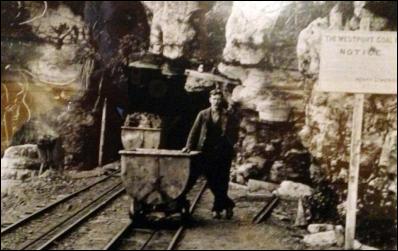

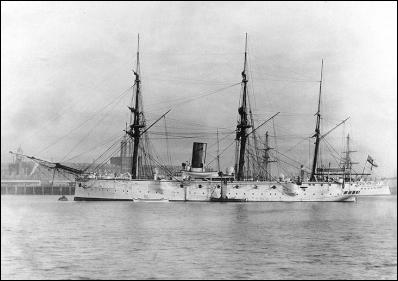
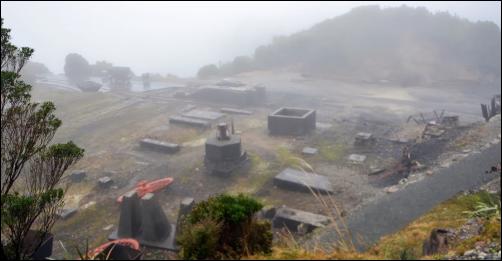
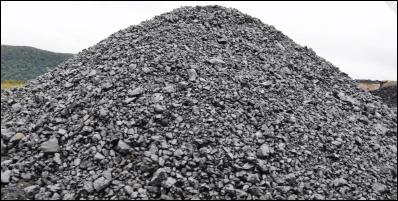
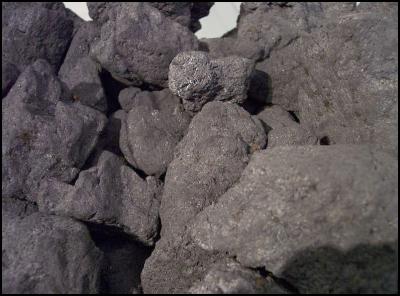
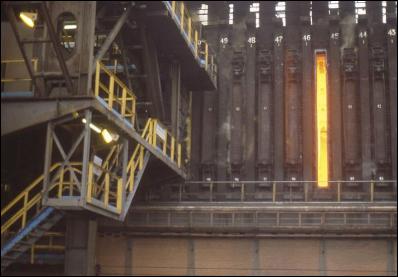

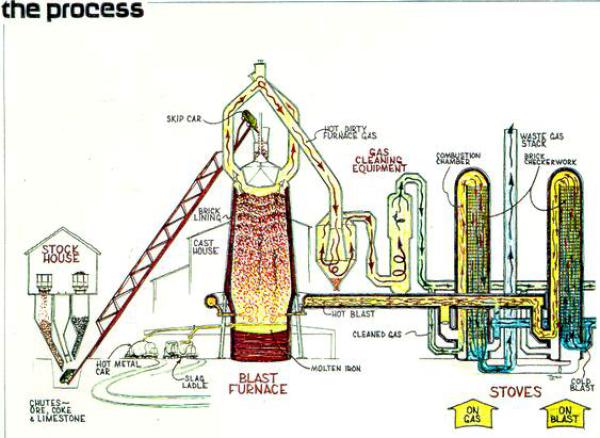
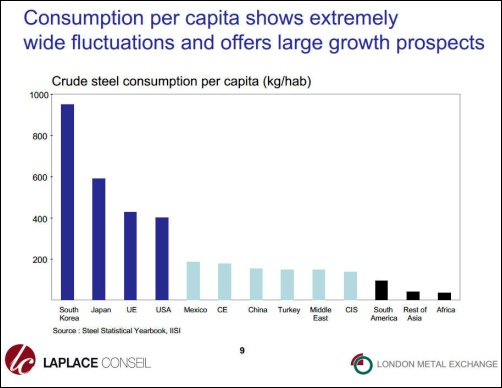
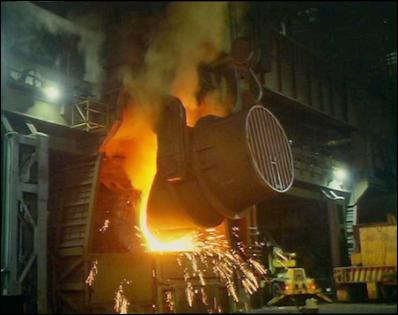
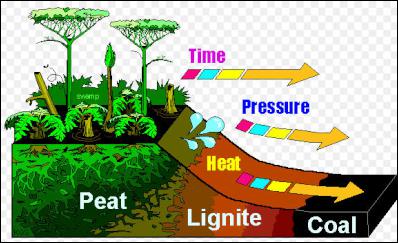
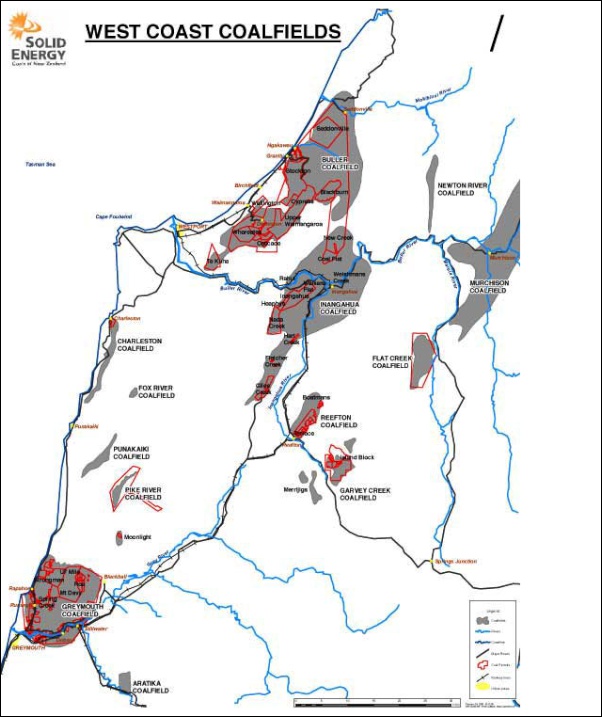

 Gordon Campbell: On Why Right Wingers Think All Governments (including Their Own) Are Incompetent
Gordon Campbell: On Why Right Wingers Think All Governments (including Their Own) Are Incompetent Ian Powell: Information Technology And New Zealand's Health System - 0 Steps Forward, 2 Back
Ian Powell: Information Technology And New Zealand's Health System - 0 Steps Forward, 2 Back Binoy Kampmark: NATO - 75 And Still Threatening
Binoy Kampmark: NATO - 75 And Still Threatening Ramzy Baroud: When Supporting Israel Is A Liability - Is Gaza Changing The West?
Ramzy Baroud: When Supporting Israel Is A Liability - Is Gaza Changing The West? Martin LeFevre - Meditations: The Sovereignty Of The Earth And Humanity
Martin LeFevre - Meditations: The Sovereignty Of The Earth And Humanity Binoy Kampmark: Dutton’s Quixotic Proposal - Nuclear Lunacy Down Under
Binoy Kampmark: Dutton’s Quixotic Proposal - Nuclear Lunacy Down Under